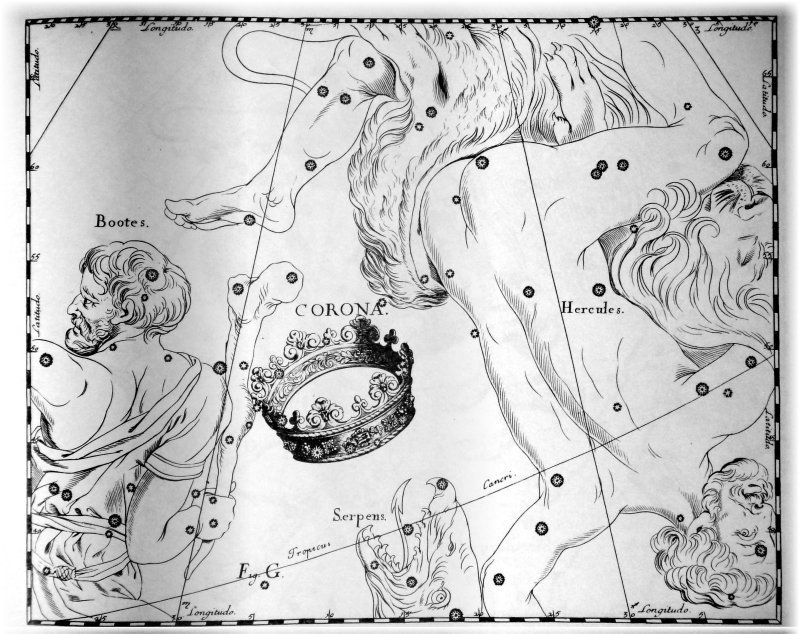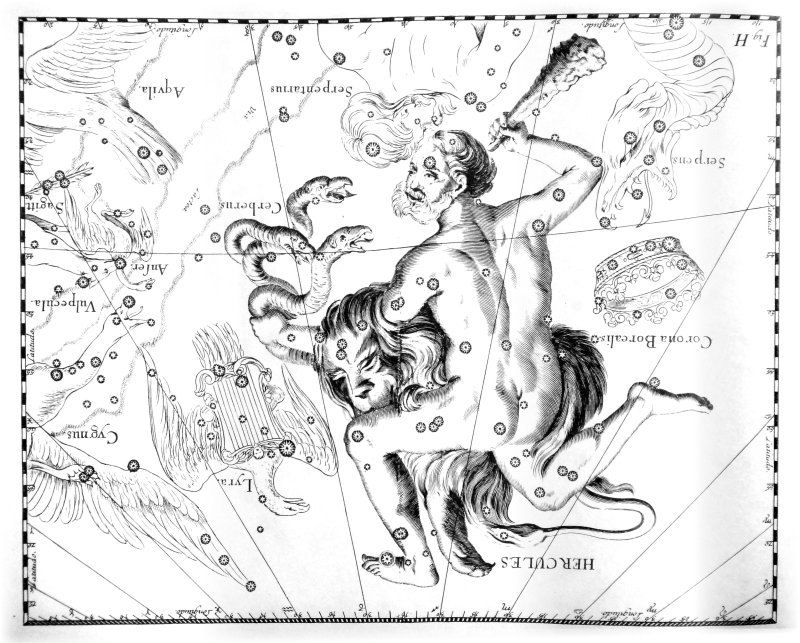The Crown (lat. Corona Borealis)
Ariadne, the daughter of Minos, King of Crete, fell in love with Theseus, the hero of Athens, who volunteered to accompany the next party of boys and girls to Crete, who were destined for offering to the human-headed bull Minotaur. Ariadne furnished Theseus with a bail of wool so at to fasten one end of it to the entrance to the labyrinth, and, uncoiling it, find the way out. (hence the ariadne thread). Having done away with Minotaur, Theseus took Ariadne away with him, thus rescuing her from her father's wrath. However, on the Isle of Naxos Theseus met with the God Dionis, who ordered Theseus to leave Ariadne as she was to become his wife. The crown, which was placed on her when she was betrothed, later was moved to heaven in the image of a constellation.

Johannes Hevelius, atlas Firmamentum Sobiescianum, Map 7
Hercules, (Heracles in Greek, lat. Hercules)
The son of Zeus and Alkmene was the greatest hero of ancient times. He freed Greece from many monsters, participated in the campaign of the Argonauts, and gave help to the Gods in their struggle against the Titans. He accomplished 12 immortal feats of valour, including the killing of the Nemit Lion, who was invulnerable to arrows, laid waste to the environs of the town of Nemei and inspired fear on the residents.

Johannes Hevelius, atlas Firmamentum Sobiescianum, Map 8
Hercules is commonly portrayed with this lion's skin. In J. Hevelius star atlas he is also depicted holding Cerberus — a savage three-headed dog, guarding the entrance to Hades. The Constellation Cerberus was formed by J. Hevelius at the fall of the XVII century. Cerberus is an obsolete constellation, whose stars are now included in the Hercules.
